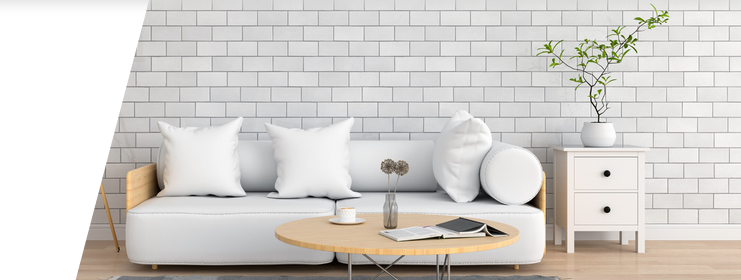Explores the defining characteristics of two popular furniture styles and helps homeowners decide which one aligns best with their personal taste and home décor. Within the context of the furniture industry, both modern and traditional furniture offer distinct aesthetics, reflecting broader design trends and consumer preferences.
Overview of Modern and Traditional Furniture:
Modern and traditional furniture represent two ends of the design spectrum. Modern furniture is characterized by clean lines, minimalist aesthetics, and functional simplicity, while traditional furniture tends to showcase intricate details, rich materials, and classic elegance. Understanding the differences between these styles helps consumers make informed choices about the mood and feel they want to create in their homes.
Key Features of Modern Furniture:
Simplicity and Clean Lines: Modern furniture focuses on simplicity, with sleek, clean lines and minimal ornamentation. This design philosophy is rooted in the idea that “form follows function,” emphasizing practicality and avoiding unnecessary embellishments. In the furniture industry, modern pieces often have geometric shapes and smooth surfaces, with an emphasis on streamlined design.
Neutral Color Palettes: Modern furniture tends to feature neutral color schemes like white, gray, black, and beige. These colors create a calm, uncluttered look that is typical of modern interiors. The minimalist nature of modern furniture allows for flexibility, making it easier to integrate into various spaces. However, bold accent colors, like deep blues or yellows, are sometimes used to add visual interest.
Materials and Technology: Modern furniture frequently uses materials such as glass, metal, leather, and polished wood, all contributing to its sleek and futuristic appeal. The furniture industry is also seeing an increase in the use of sustainable materials in modern designs, as consumers demand eco-friendly options. Additionally, tech-integrated furniture—like smart tables with charging ports—often aligns with modern aesthetics, combining design with functionality.
Minimalist Functionality: Functionality is a key principle of modern furniture design. Multi-purpose pieces, such as modular sofas or storage-integrated coffee tables, reflect the growing trend of compact, practical furniture in the industry. This style is particularly well-suited for urban living, where space efficiency is essential.
Key Features of Traditional Furniture:
Ornate Detailing: Traditional furniture stands out for its ornate craftsmanship and attention to detail. Carved wood, tufted upholstery, and curved lines are common features that add a sense of luxury and timelessness to traditional pieces. The craftsmanship involved in traditional furniture often reflects historical design influences such as Victorian, Baroque, or Queen Anne styles.
Warm, Rich Colors: Traditional furniture usually favors warm, rich colors, such as deep reds, browns, and golds. These hues contribute to a cozy, inviting atmosphere and exude a sense of formality and elegance. In the furniture industry, traditional pieces are often upholstered in luxurious fabrics like velvet, brocade, or leather, contributing to their classic appeal.
Natural Wood and Heavy Fabrics: One of the hallmarks of traditional furniture is the use of natural wood, such as mahogany, oak, or cherry. These woods are often polished and stained to emphasize the grain and rich color of the material. Heavy, durable fabrics are common for upholstery, and traditional pieces often feature detailed woodwork and carvings that showcase craftsmanship.
Classic and Timeless: Traditional furniture is designed to stand the test of time, both in terms of style and durability. The classic design elements are meant to evoke a sense of heritage, stability, and sophistication. Consumers who favor traditional furniture are often drawn to its timeless appeal, preferring pieces that won’t go out of style quickly and can be passed down through generations.
How Modern and Traditional Furniture Impact the Furniture Industry:
The divide between modern and traditional furniture reflects the diverse range of tastes in the furniture industry
Modern furniture has gained prominence in recent years, thanks to the growing popularity of minimalist interior design, urbanization, and a shift toward smaller living spaces. Many manufacturers are producing sleek, space-saving designs that cater to modern living. The industry’s focus on sustainability and technological integration has also contributed to the rise of modern furniture, appealing to tech-savvy, environmentally-conscious consumers.
However, traditional furniture still holds a strong place in the furniture industry, especially among homeowners seeking timeless elegance and craftsmanship. Traditional furniture often appeals to those with larger homes, where space allows for more ornate and substantial pieces. The luxury furniture market, in particular, continues to embrace traditional designs, with high-end manufacturers offering classic, handcrafted pieces that reflect historical design influences.
Which Style Suits Your Home?
Consider Your Home’s Architecture: When choosing between modern and traditional furniture, it’s essential to consider your home’s architectural style. Modern furniture works well in homes with open floor plans, large windows, and minimalistic features, while traditional furniture complements more formal settings, such as homes with intricate moldings, coffered ceilings, or hardwood floors.
Personal Preferences: Your personal style and lifestyle should guide your choice. If you appreciate simplicity, clean lines, and a clutter-free environment, modern furniture may be the better option. On the other hand, if you love rich details, warm colors, and a sense of history, traditional furniture could be more appealing.
Mixing Styles: The furniture industry has seen an increase in consumers mixing modern and traditional styles, creating a transitional or eclectic look. A modern sofa paired with a traditional wooden coffee table or a traditional armchair placed in a minimalist living room can create a unique, personalized space.
Conclusion:
The decision between modern and traditional furniture depends on various factors, including your home’s architecture, your personal taste, and your lifestyle needs. While modern furniture offers clean lines, functionality, and tech integration, traditional furniture brings a sense of warmth, history, and craftsmanship. The furniture industry continues to cater to both styles, offering a wide range of options to suit diverse preferences. Whether you lean towards the sleek simplicity of modern pieces or the timeless elegance of traditional designs, both styles offer unique ways to enhance your home’s aesthetic.





Comments